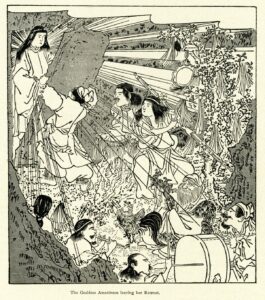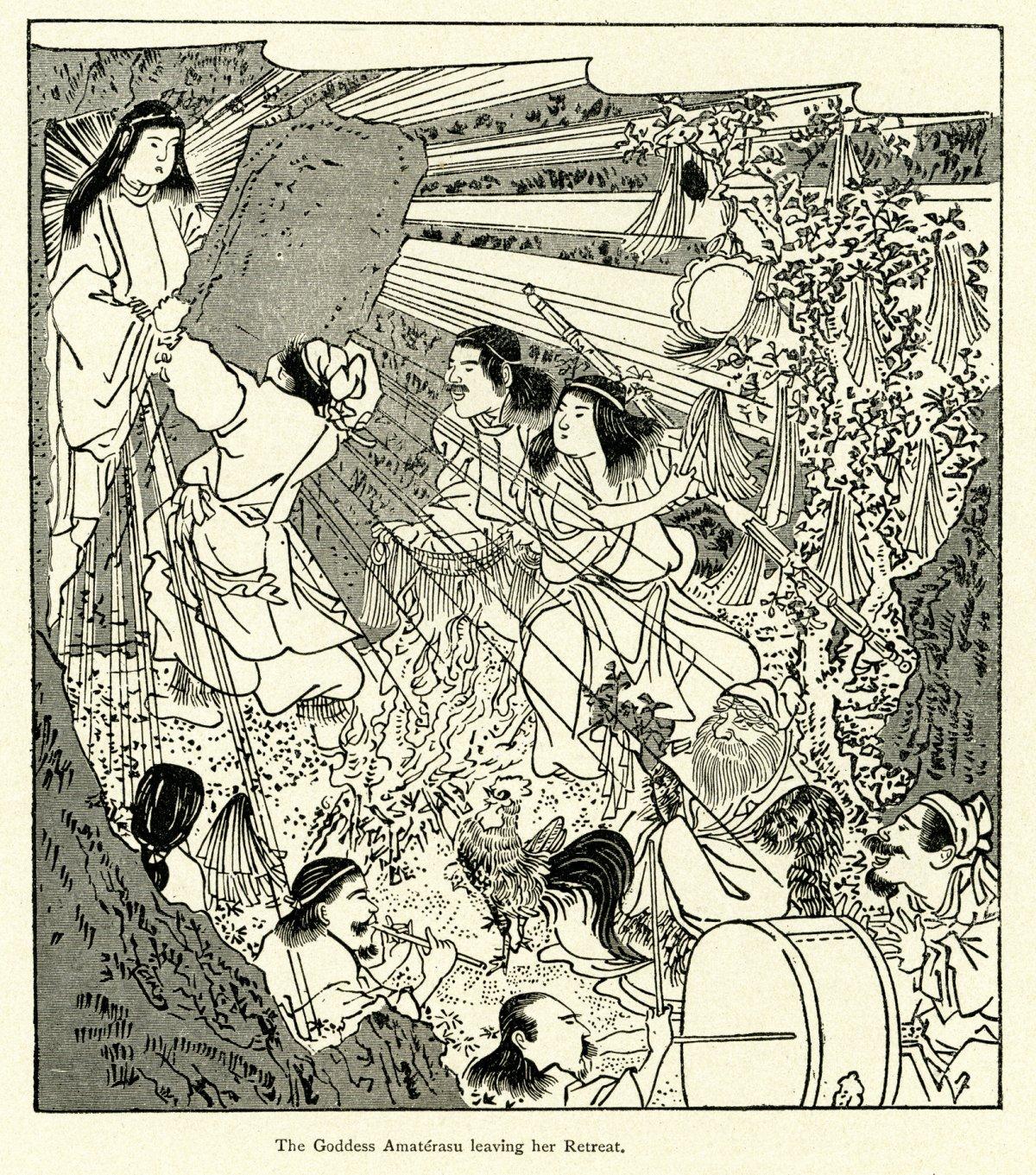 duncan1890 / DigitalVision Vectors / Getty Images
duncan1890 / DigitalVision Vectors / Getty Images
Do you have a fascination with old Japanese myths and legends? Japanese mythology is full of epic tales of adventure along with deep reflections on life. Learning about Japanese history and culture is also a great idea for those studying the language.
A little bit of background before we dive into the myths: Japanese mythology origin consists of stories derived from old folk beliefs and incorporates elements of Shinto mythology as well as Buddhism. Passed down from generations through both spoken word and writing, there is a vast number of ancient tales that touch upon virtually every aspect of life.
Common themes in Japanese folklore are deities, royalty, and nature. Japanese gods and goddesses are called kami, and there are at least eight million of them in Japanese lore. With such a diverse cast of characters, it’s no wonder there are so many engaging stories woven throughout the Japanese culture. We’ve picked five of the most famous legends from Japan myths and legends, so you can discover their epic beauty for yourself!
Japanese Mythology: 5 Famous Japanese Legends
1. Japanese Creation Myth
The creation myth comes from the Kojiki “Record of Ancient Matters,” the first book written in Japan (dating back to 712) and the Nihon Shoki (finished in 720).
The story begins in a limitless, formless chaos of a dark, silent universe. After many eons, particles begin to move and create sound. The lightest particles rise to form the heavens, where the first three gods appear — the Three Creating Deities.
The remaining particles drop down and create a mass called “Earth,” but it takes many millions of years for this to solidify. Instantaneously, two more deities emerge, this time on Earth, sprouting from a reed.
Many more Japanese mythology gods follow, but they have nothing to do other than merely exist while the universe remains in chaos.
Two gods, Izanagi and Izanami, are summoned and told to descend to the land to rule creation. Thus, life on Earth begins.
2. The Sun, the Moon, and the Wind
Shortly after creation, Izanami dies during childbirth. Distraught, Izanagi takes a journey to Yomi, the land of the dead, to bring her back.
Izanagi is too late. Izanami’s body has already started to rot. Izanagi returns to Earth and purifies himself, and as he does so, new deities appear including Amaterasu, the sun goddess, Tsukuyomi, the moon god, and Susanoo, god of the wind.
As you can see, many Japanese legends have to do with the creation of everyday things in the world around us.
SEE ALSO: 8 Essential Japanese Greetings
3. Amaterasu and the Cave
Amaterasu is the most well-known Japanese goddess, and much of Japanese mythology tells of her rivalry with her brother Susano-o.
In the most famous tale, Amaterasu hides inside a cave after another conflict with Susano-o. This causes the entire world to sink into darkness, and evil spirits begin to roam the Earth.
After several attempts by the gods to draw her from the cave, they are finally successful when the Ame-No-Uzume, the goddess of merriment, dresses in flowers and dances on an upturned washtub.
As the flowers fall from her body, the male gods laugh uproariously. As Amaterasu peaks out of the cave, Amenotejikara pulls her from the cave, and light returns to the world.
Today, this Shinto mythology story is often remembered through theatrical performances in Japan.
4. Hare of Inaba
There are two versions of the Hare of Inaba, but today we’ll look at the most widely-accepted versions. This old Japanese myth is a metaphor of how civilization struggled against barbarism to form the nation of Japan.
The legend tells how a hare tricks a crocodile into forming a bridge to enable him to cross to an island. Unfortunately, the crocodiles figure out the trick, and team up on the hare and pull off all of his fur.
Around the same time, some men who resembled the king’s son pass the hare. The hare calls out to them and asks for help. The brothers advise the hare to wash in seawater and dry in the sun. The salt from the seawater makes the hare even more uncomfortable, and the hare lays in the field crying out in pain.
Soon after, another brother tells the hare to wash in fresh water and roll in cattails pollen. After the treatment, the hare rewards the brother, who is actually the fairy Okuni-nushi-no-Mikoto, by telling him that he will marry Princess Yakami.
The hare of Inaba is remembered for his role in bringing out modern Japan by his representation in festivals, on artwork, and in shrines around the country. This is one of the most well known Japanese legends.
5. The Japanese Legend of Emperor Jimmu
Jimmu, the great-grandson of the goddess Amaterasu, is the mythical founder of Japan and first emperor on traditional lists.
Legend says that he was born in 711 BCE and died in 585 BCE, which would mean he was 126 years old at his death. There is little evidence that Jimmu ever existed. In fact, modern-day scholars believe that of the nine emperors, Suizei, Jimmu’s successor, was the only one who actually lived.
Despite this historical discrepancy, this old Japanese myth is still important as it tells the story of how the Imperial Family, which still exists today, began.
Want to Dive Deeper into Japanese Mythology?
The beauty and excitement of Japanese mythology get even richer when you learn more about the language and culture. Many customs in Japan can be traced back to these ancient tales, and echoes of these legends can be heard in daily conversations. Apart from total immersion, the best way to improve your command of the language is with Japanese lessons.
As you can see, Japanese mythology is full of compelling stories about love, life, and loss. Japanese language classes are a great way to share your favorite tidbits of lore, as well as learn about new tales from your teachers and classmates. Whether you’re looking to share stories through conversation or read them in written form, an instructor can provide you with the tools you need to dive deeper into the language. You can even try an online lesson with a native Japanese speaker!
Which legend in Japanese mythology is your favorite? Do you know other interesting legends in Japan lore that you’d like to share? Let us know in the comments below!
Maile Proctor
